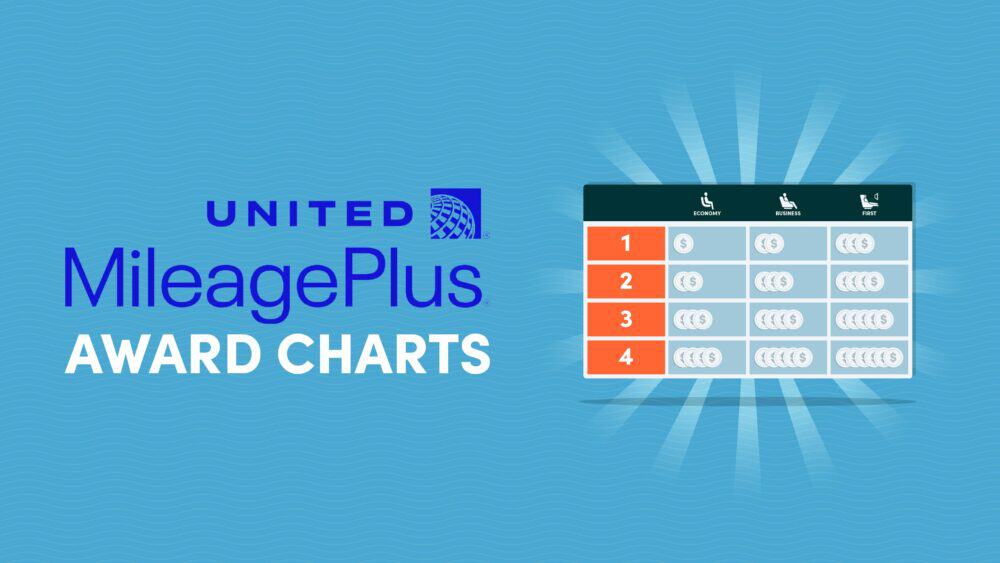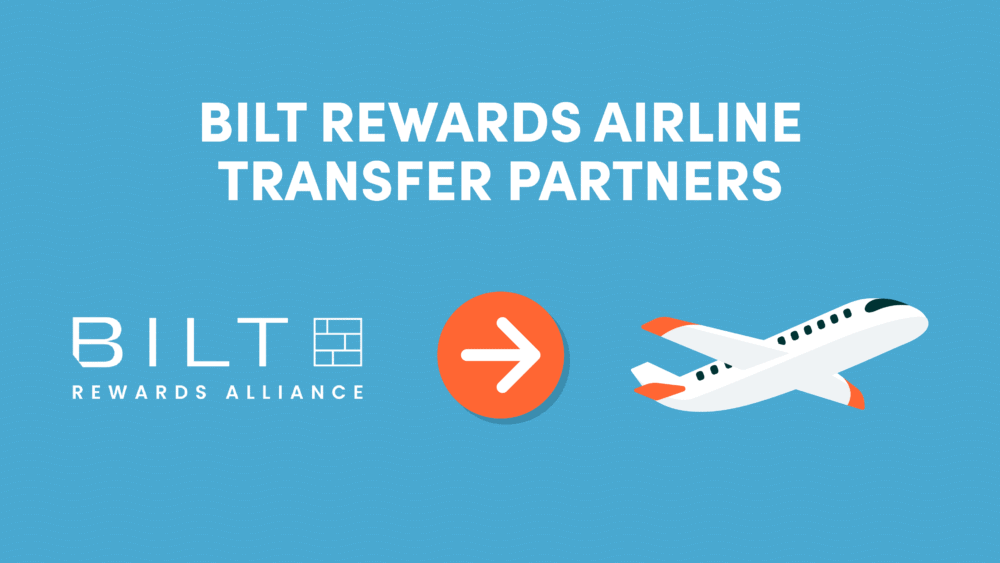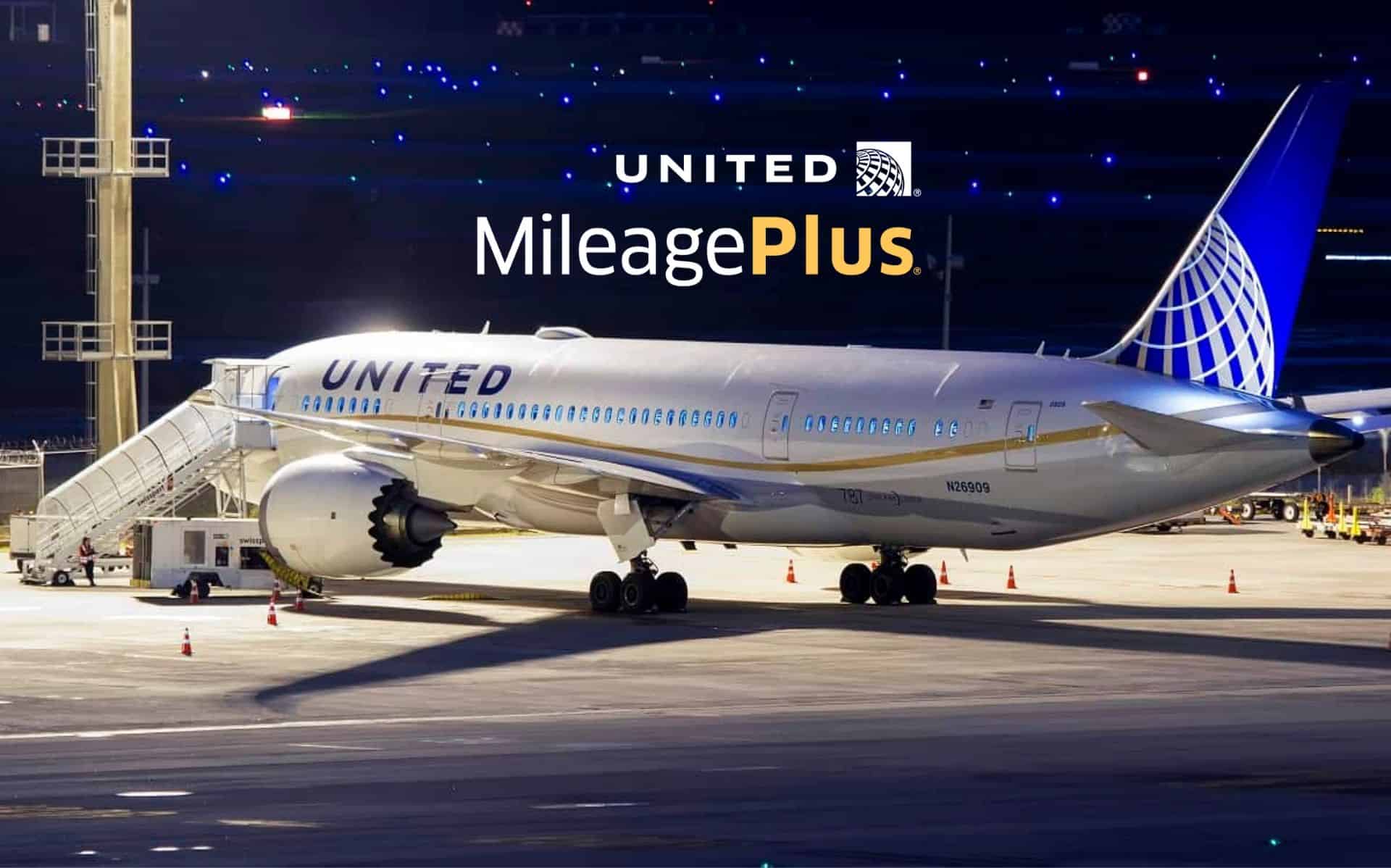
10xTravel is part of an affiliate sales network and receives compensation for sending traffic to partner sites, such as CreditCards.com. This compensation may impact how and where links appear on this site. This site does not include all financial companies or all available financial offers. Terms apply to American Express benefits and offers. Enrollment may be required for select American Express benefits and offers. Visit americanexpress.com to learn more. All values of Membership Rewards are assigned based on the assumption, experience and opinions of the 10xTravel team and represent an estimate and not an actual value of points. Estimated value is not a fixed value and may not be the typical value enjoyed by card members.
Note: Some of the offers mentioned below may have changed or may no longer be available. The content on this page is accurate as of the posting date; however, some of our partner offers may have expired. You can view current offers here.
United miles are among the most popular in the miles and points community and for good reason. First, when you redeem United miles to book award flights, the taxes/fees will be minimal which keeps your cash cost down. Second, it’s so easy to earn United miles with credit cards. You can transfer Chase Ultimate Rewards points earned with cards such as the Chase Sapphire Preferred® Card and the Ink Business Preferred Card. Additionally, you can earn United miles directly with one of its co-branded cards issued by Chase.
For some creative inspiration, let’s see how the 10xTravel team would use 100,000 United miles if they fell into their laps. Let’s check out what they had to say.
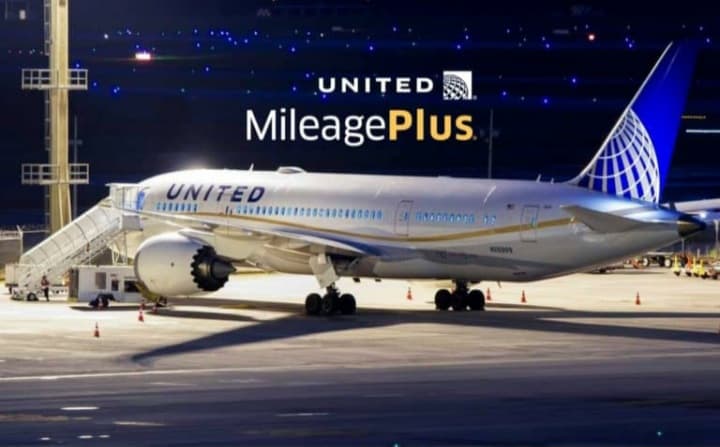
Anna Zaks

I love United’s miles because it’s a dominant airline at my home airport and because I can easily book Star Alliance flights. My husband and I travel to destinations served by United and its partners often, usually Europe or Israel, so I am always happy to replenish my stash of United miles.
Mexico’s been on my wish list for a while now. I’ve only been to Puerto Vallarta and Riviera Maya so far, but I really want to explore Mexico City, Merida, San Miguel de Allende and Oaxaca and eat my way through this amazing country.
United doesn’t have an award chart anymore but the lowest saver award from the U.S. to Mexico is just 17,500 miles one-way. So I’d need 70,000 for two round-trip tickets for me and my husband.

When you are searching for award space, don’t forget to login into your MileagePlus account. United shows more domestic awards to its own elites and credit card holders.
This would leave me 30,000 miles to spend on another trip. London is one of my favorite cities and I’ve wanted to go back to London for a very long time. 30,000 United miles is just enough for a one-way ticket in economy.

I still have a good stash of Ultimate Rewards points from a recent Chase Ink Preferred welcome bonus I earned. I could transfer Ultimate Rewards points to United or another Chase transfer partner and book the other leg of this trip.
To make the long flights more comfortable, I’d use the airline fee credit that came with The Business Platinum® Card from American Express and purchase Economy Plus seats for extra legroom. Not quite like the business class, but still far more comfortable than a regular economy seat.
Carly Helfand

A few things about me: I currently hold United Platinum status, I’m based in Portland, Oregon, and I almost exclusively fly economy. Those facts mean I enjoy flying United’s own metal above all else, particularly when it comes to international travel; my itineraries almost always involve multiple flights, and on United, my benefits go furthest toward making life in the back of the plane more enjoyable.
Unfortunately, that’s become a little more difficult to do since United scrapped its award chart for its own flights last November. Since then, I’ve seen some exorbitant economy award prices for international travel on flights operated by United itself.
Thankfully, though, it hasn’t been all bad, and it’s often possible to find flights for the same number of miles as they used to cost. With that in mind, here’s how I’d spend 100,000 United miles to get to two of my favorite destinations on earth—Edinburgh and the Azores Islands—in economy.
Here’s the plan: Fly from the U.S. to Edinburgh (30,000 miles), from Edinburgh to Lisbon (0 miles), and from Lisbon back to the U.S. (30,000 miles) on one itinerary, and then add another round-trip between Lisbon and Ponta Delgada (25,000 miles) in the Azores.
Let’s start with the trans-Atlantic flights—from the U.S. to Edinburgh and from Lisbon back to the U.S. Back in the award-chart days, United economy from the U.S. to Europe or vice-versa cost 30,000 miles one-way or 60,000 round trip. If you’re willing to fly partner airlines, you’ll still reliably find those prices, but it may mean adding a stop depending on where you’re going. Between the U.S. and Scotland, for example, no Star Alliance carrier offers a nonstop except United itself, so going with a partner means connecting through its hub.
Luckily, though, it’s still possible to find United’s own nonstops at the 30,000-mile price (from airports such as Newark, for example). And if you’re like me and need a stop regardless—but would rather fly United than a partner, even at a slightly higher cost (I don’t know about you, but I’d much rather do my connection in the U.S. than in Europe after an overnight flight)—you’ll have 15,000 extra miles left over on this itinerary to position yourself.
On the way back, it’s much easier to find a good 30,000-mile itinerary coming from Lisbon since it’s the home of Star Alliance partner TAP Portugal. Both TAP and United operate nonstop flights to the U.S., so even if United is being finicky with its award pricing, you can take a reasonably priced TAP itinerary home.
Now for the real fun: a free trip between Edinburgh and Lisbon, thanks to United’s Excursionist Perk, which allows you to add on a second destination in the same region for no additional miles. If you price out a multi-city award from the U.S. to Edinburgh to Lisbon and back, the middle leg should come up as free!
There aren’t great options for getting between Edinburgh and Lisbon quickly, but there are an abundance of options with layovers long enough to go out and enjoy an extra city (such as Frankfurt) for nearly a full day.
For the last portion of the trip, 25,000 United miles will get you a round-trip on TAP between Lisbon and Ponta Delgada to explore the stunning Sao Miguel Island in the Azores. When I did it back in 2017, that was the economy price, but now business saver awards seem to be pricing out at 25,000—I’ll take it.
Anya Kartashova

Even though I don’t live in a United Airlines hub, the MileagePlus program is where most of my Chase Ultimate Rewards points go. However, I don’t redeem United miles willy-nilly. A lot of strategy goes into these mileage redemptions because of their lesser-known value—the Excursionist Perk.
The Excursionist Perk allows you to book a free one-way flight in a United-defined region on a round-trip journey. The free segment has to be within a single region and can’t be in the same region where travel originates.
A simple example of how this works would be to fly from Mainland U.S. to London, part of Europe, continue on to Rome, also part of Europe, on the same award and return to Mainland U.S. The flight between London and Rome would be free (you just have to cover the taxes) if booked as a multi-city itinerary.
In the past, I saved quite a bit of cash on a trip to the Galápagos Islands by utilizing the Excursionist Perk.
Lately, Turkey has been on my mind. Its UNESCO World Heritage Sites, stunning coastlines and exquisite cuisine have been calling my name. Luckily, Turkish Airlines is a Star Alliance partner of United—a partnership that brings the country straddling both Europe and Asia within reach.
As per United’s region definition, Turkey is part of Europe, which means a one-way award flight in economy class from the United States requires 30,000 miles at Saver level.
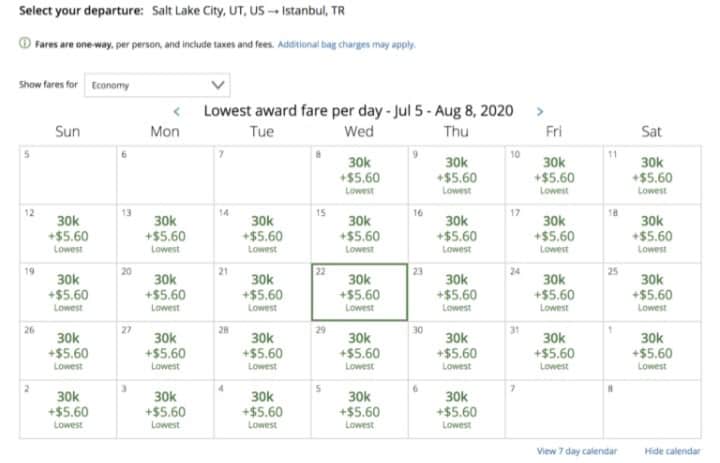
As part of a round-trip award requiring 60,000 United miles, I would add a free one-way flight to either Cappadocia (served by Kayseri Erkilet Airport), Izmir (served by Izmir Adnan Menderes Airport) or Bodrum (served by Milas–Bodrum Airport)—whichever saves me the most money. I would pay cash for a domestic flight back to Istanbul to catch my return flight to the States.
Because I have 100,000 miles to play with, I would transfer another 20,000 points from my Chase Ultimate Rewards account and book a ticket for a companion, be it my mom, husband or a friend. We all have miles in various frequent flyer accounts that we can mix and match and trade points as we see fit.
Let’s just hope the coronavirus doesn’t derail our travel plans for too long.
Travis Cormier

Unlike my fellow writers before me, I haven’t really used my United miles that much. I tend to use other award programs a lot more. However, I’ve been saving up my United miles for one specific trip: Australia.
I’m hoping to make the trip to Australia for my 30th birthday in 2022. I’m really hoping to be able to fly from my home city of Houston (IAH) to Sydney (SYD). Clocking in at 17.5 hours, this is a long flight. If you know me, I like to sit up front. Business class from Houston to Sydney on United costs 80,000 miles one-way.
Unfortunately, there isn’t typically a lot of availability on this route. Thankfully, United lets you go through a third region. Another option is to fly ANA, Asiana, or another Star Alliance partner through Asia for only 10,000 miles more. Although it will be an even longer trip, for 90,000 points this is a great way to get to Australia.
Matt Brown

Brace yourselves – I’m using a good chunk of these 100,000 United miles to fly…. in economy, not up front. GASP! I know I know, this might come as a bit of a shock to you, but there’s one AVGeek flight that I’ve written about before, but still have yet to do. So maybe this fresh stash of United miles is just what I need to get over the hurdle and finally book it.
I’m talking about United’s “Island Hopper” flight of course – the thrice weekly flight from Honolulu (HNL) through various islands in Micronesia, with the final destination being Guam (GUM). Not only does this flight serve as an essential lifeline for these islands in terms of delivering cargo, mail and food, it’s also a super unique way to get to a corner of the world that not many people get to visit.

For just 27,500 United miles + $12.60 in taxes and fees, you can *enjoy* 14.5 hours of travel in economy. The longest leg is about five hours of flying, and each subsequent leg is only about one hour each give or take, with about an hour on the ground at each stop, so it’s much more manageable than it initially appears to be.
But, this isn’t one of those aspirational AVGeek flights for the hard product since you’re on a domestically configured 737-800. Translation: there’s nothing special about the actual plane flying this route. Instead, you’re there for the view out the window and the overall experience.
Plus, with cash rates regularly costing $1,500 per person for the one-way flight, this makes it an absolutely incredible use of United miles from a valuation perspective.
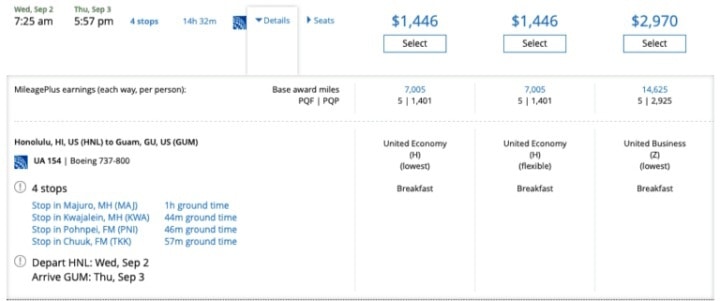
If you really want to get creative, don’t forget you can also take advantage of United’s Excursionist Perk to really stretch your points and miles and do a quasi “Island Hopper” route.
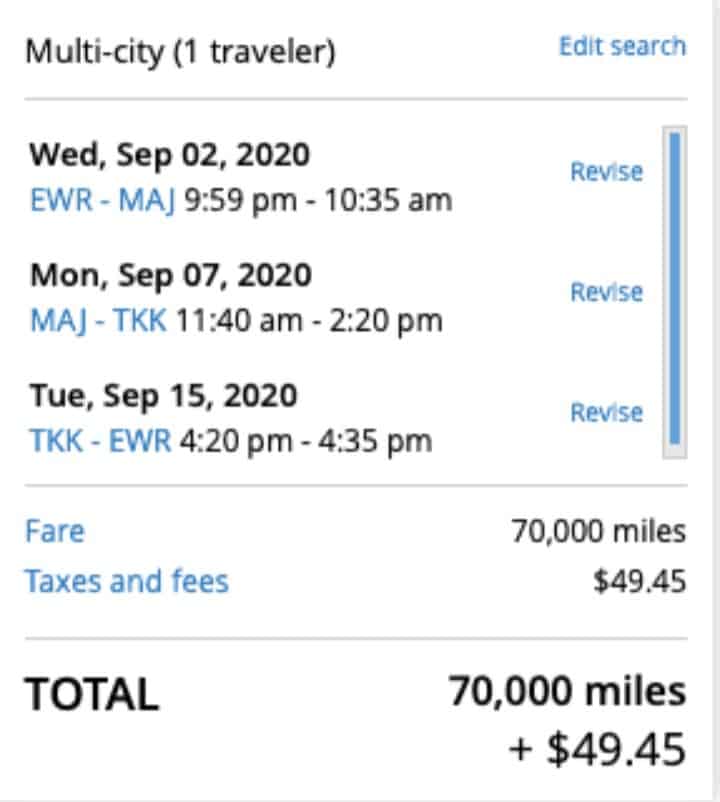
To really blow your mind, look at this route you can take starting and finishing in Newark (EWR) for just 70,000 United miles + $49.45. What you don’t see is that it includes some long layovers, allowing some time to explore the following cities along the way:
* San Francisco – 13-hour layover
* Honolulu – 15-hour layover
* Majuro – initial destination
* Pohnpei – one-hour layover (part of the Island Hopper)
* Chuuk – excursionist perk destination
* Guam – 13-hour layover
* Tokyo – seven-hour layover
* Newark – final destination

All that to say, as exciting as the above itinerary is and a pretty incredible use of United miles, I would likely instead use 100,000 United miles as a part of a greater Hawaii and Asia trip. Maybe we’d fly to Hawaii for four to five days, then hop on the Island Hopper, stop in Guam for a couple of days, then fly to Tokyo for 15,000 United miles one-way per person, and then fly home after exploring Japan.
Although by that point, we’d likely opt for flying up front on our way home to end the trip off right!
Final Thoughts On Using 100,000 United Miles
Whether you’re planning to book a long business class flight or squeeze out as many destinations as possible with an economy ticket (plus the Excursionist Perk), United miles offer some great options. When you pair that with the ease of earning the miles, it’s no wonder the United MileagePlus program is a go-to for many miles and points enthusiasts.
Perhaps the best part is that we’ve only just scratched the surface of the many options you have for using United miles to travel.
How would you use 100k United miles?
New to the world of points and miles? The Chase Sapphire Preferred® Card is the best card to start with.
With a bonus of 75,000 bonus points after you spend $5,000 on purchases in the first 3 months from account opening. , 5x points on travel booked through the Chase Travel Portal and 3x points on restaurants, streaming services, and online groceries (excluding Target, Walmart, and wholesale clubs), this card truly cannot be beat for getting started!
Editors Note: Opinions expressed here are author’s alone, not those of any bank, credit card issuer, hotel, airline, or other entity. This content has not been reviewed, approved or otherwise endorsed by any of the entities included within the post.







